Birds Korea Research Work
Research is an important part of Birds Korea’s work. Our research includes gathering and analysing data and information to use as evidence to support our conservation message.
A few examples of our research programs include:
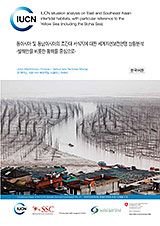
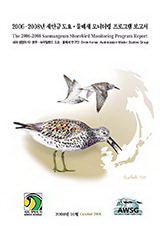 Together with the Australasian Wader Studies Group (AWSG) we developed and led the Saemangeum Shorebird Monitoring Program in 2006, 2007 and 2008. This remains the largest-scale, most collaborative shorebird research project to date in the Republic of Korea (ROK), and in the Yellow Sea. It confirmed the impact of a large-scale reclamation project on shorebirds (for the first time on the East Asian-Australasian Flyway), and its results and findings have been shared widely through events, SSMP reports, in journals, in doctoral thesis chapters and most recently in the 2012 IUCN study on East Asian intertidal wetlands (Mackinnon et al. 2012).
Together with the Australasian Wader Studies Group (AWSG) we developed and led the Saemangeum Shorebird Monitoring Program in 2006, 2007 and 2008. This remains the largest-scale, most collaborative shorebird research project to date in the Republic of Korea (ROK), and in the Yellow Sea. It confirmed the impact of a large-scale reclamation project on shorebirds (for the first time on the East Asian-Australasian Flyway), and its results and findings have been shared widely through events, SSMP reports, in journals, in doctoral thesis chapters and most recently in the 2012 IUCN study on East Asian intertidal wetlands (Mackinnon et al. 2012).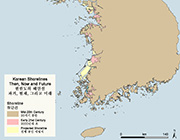
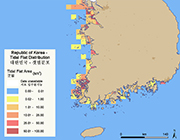 Our measurement of tidal-flats in 2009 and 2010 was the first independent NGO assessment of tidal-flat area remaining in the ROK – providing an essential baseline for conservation work. Our estimate of remaining tidal-flat area (c. 110,000ha nationwide) is remarkably similar to a preliminary estimate recently developed by a team at the University of Queensland (Australia) using a different method. Both independent teams found less than half the area of tidal-flat said to remain in many publications, including in a national report submitted to the Convention on Biological Diversity.
Our measurement of tidal-flats in 2009 and 2010 was the first independent NGO assessment of tidal-flat area remaining in the ROK – providing an essential baseline for conservation work. Our estimate of remaining tidal-flat area (c. 110,000ha nationwide) is remarkably similar to a preliminary estimate recently developed by a team at the University of Queensland (Australia) using a different method. Both independent teams found less than half the area of tidal-flat said to remain in many publications, including in a national report submitted to the Convention on Biological Diversity.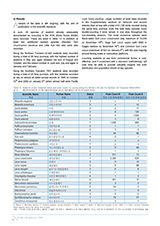
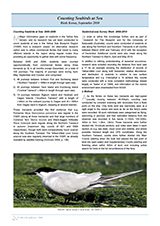
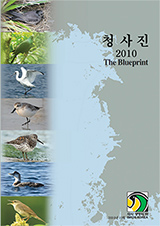 Our counts of landbirds on offshore islands and on seabirds at sea informed many of the pages of the Birds Korea 2010 Blueprint. These counts have already contributed to a growing recognition of the importance of offshore islands to birds and the discovery of some key areas for seabirds. Count data from 2000 to 2013 will be incorporated in a major report planned for publication in 2014.
Our counts of landbirds on offshore islands and on seabirds at sea informed many of the pages of the Birds Korea 2010 Blueprint. These counts have already contributed to a growing recognition of the importance of offshore islands to birds and the discovery of some key areas for seabirds. Count data from 2000 to 2013 will be incorporated in a major report planned for publication in 2014.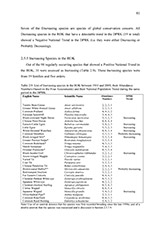
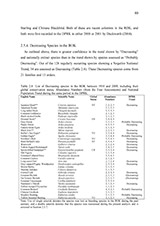
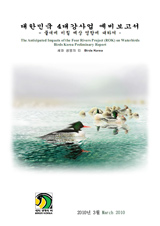 Our basic analysis of Ministry of Environment Winter Census bird data in 2010 (Moores et al. 2010) provided the first detailed and independent assessment of anticipated impacts to waterbirds to be caused by the Four Rivers project. Many of our predictions have subsequently been proven correct by declines in key waterbird species detected through preliminary analysis of count data between 2010 and 2012.
Our basic analysis of Ministry of Environment Winter Census bird data in 2010 (Moores et al. 2010) provided the first detailed and independent assessment of anticipated impacts to waterbirds to be caused by the Four Rivers project. Many of our predictions have subsequently been proven correct by declines in key waterbird species detected through preliminary analysis of count data between 2010 and 2012.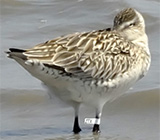
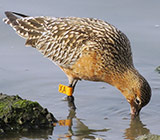 Work at the Mokpo Namhang Urban Wetland, and at Aphae Island in the southwest of the country, has improved understanding of shorebird migration and generated the vast majority of sightings of leg-flagged shorebirds reported to the AWSG (responsible for collating and analysing such records on the Flyway) between 2009 and 2012.
Work at the Mokpo Namhang Urban Wetland, and at Aphae Island in the southwest of the country, has improved understanding of shorebird migration and generated the vast majority of sightings of leg-flagged shorebirds reported to the AWSG (responsible for collating and analysing such records on the Flyway) between 2009 and 2012.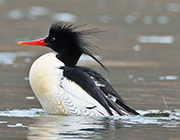
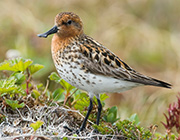 Focused work on the Critically Endangered Spoon-billed Sandpiper and the Endangered Scaly-sided Merganser has improved understanding of the distribution and ecological requirements of both species. Our 2012 survey of Scaly-sided Merganser found 140 birds wintering nationwide – several times the number reported each year by the Ministry of Environment Winter Census.
Focused work on the Critically Endangered Spoon-billed Sandpiper and the Endangered Scaly-sided Merganser has improved understanding of the distribution and ecological requirements of both species. Our 2012 survey of Scaly-sided Merganser found 140 birds wintering nationwide – several times the number reported each year by the Ministry of Environment Winter Census.- As funding and capacity allows, between now and the next CBD conference (in the ROK in the second half of 2014), we will continue our research on changes in population in all of the nation’s regularly-occurring bird species – and the causes of declines.
- We also aim to encourage members (both new and old) to help us develop regular counting of birds at local sites.



